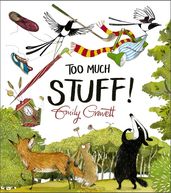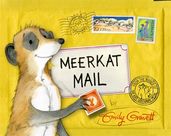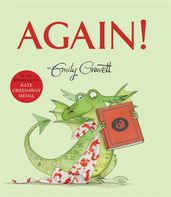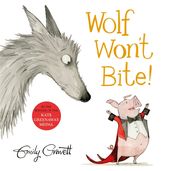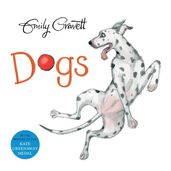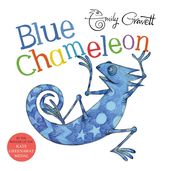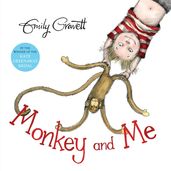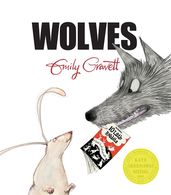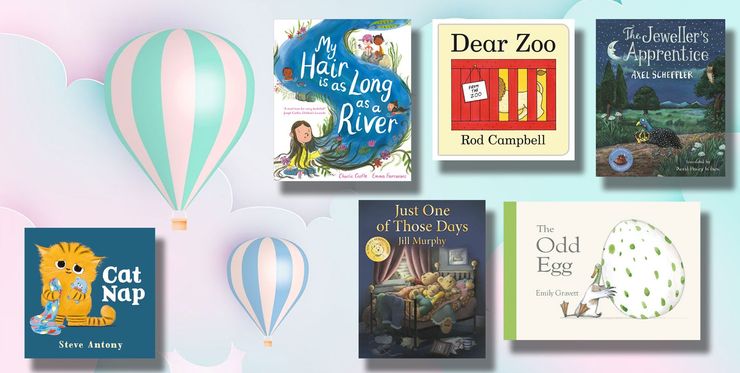How animal characters can help children build empathy
Emily Gravett’s books are full of loveable animal characters which children adore. Here, Emily tells us how animal characters can help little readers build empathy and explore difficult subjects.
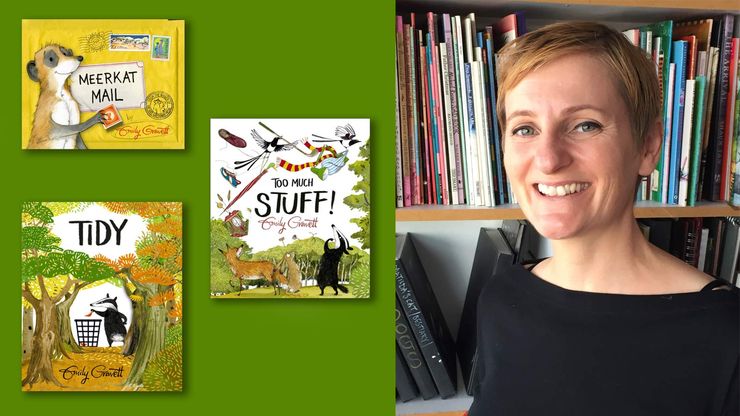
Many of our most loved children’s books feature animal characters, from classics like Watership Down and The Animals of Farthing Wood to Emily Gravett’s beautifully illustrated picture books, including the CILIP Kate Greenaway Medal-winning Wolves and Little Mouse’s Big Book of Fears. Here, Emily tells us why she is so drawn to using animal characters in her stories, and we share a selection of Emily Gravett’s books featuring our furry, feathered and scaly friends.
I draw a lot of animals, birds, bugs and non-humans in my books, and I’m often asked why. It’s a good question, and I often struggle to answer clearly because it is a complex subject, and there isn’t just one reason. Sometimes, if I’m trying to keep my answer short, I’ll just say ‘because I like to draw animals,’ and although there is some truth in this (I do love a bunny), it’s not the real reason I often pick animals over humans.
One of my aims when I am making a picture book is to appeal to the reader. The reader being both the child and the adult who is invariably sharing the book with the child. I want the reader to engage. I want them to feel emotion, to be able to empathise with the character in the book, or to begin to understand that not everyone feels the same way as them.
So, when I use an animal to represent a character in my book instead of a human, I am able to transcend a whole lot of problems which may narrow the appeal to the reader. I want my book to be looked at by the widest audience, right from when the adult in the shop or library first picks it up. We humans constantly make snap judgements, however much we try to resist. I’m sure many of us have curated our children’s lives – carefully avoiding gender stereotyping – only to find outside influences creep in. I avoided buying gendered clothing when my daughter was little only for her to fish out the flounciest dress from a friend’s hand-me-downs and wear it constantly because unlike her dungarees which made her feel ‘playful’ the dress made her feel ‘pretty,’ and somehow she’d got the impression that this was favourable. Using animals instead of people helps me to cut down many of our ingrained and even our subconscious prejudices. To see past surfaces and get straight down into personality and emotion.
For example; let’s imagine a story about a little girl who is afraid of life. She’s afraid of bugs and loud noises, of being alone. All sorts of things. Have you formed a picture of her in your head? Does that picture change if she’s a toddler? How about if she’s older? What about if it’s a boy not a girl? Do you identify with them, or are you (go on admit it) judging them based on their gender, age, or even their colour?
Back to our book: How about we change our little boy/girl into a mouse? Suddenly her fears are easier to empathise with, aren’t they? The mouse’s age, gender or colour feel less relevant because magically when we anthropomorphise a mouse, the complexity is stripped away and all we see is someone small (like us), someone vulnerable (like us) who (like us) is often scared.
Animals are ‘like us’, but they are not ‘us’, which allows just enough emotional distance from which to explore subjects that would be too raw, frightening or too ‘real’ if we used humans. Topics like loneliness, fear, or environmental disaster.
There is also a sort of shorthand around animals that allows us to set up part of a story just by using a particular species. As in my earlier example – even a small child knows that mice are nervous, or that owls are wise. This kind of knowledge can be harnessed and turned on its head to challenge and play with the child’s perceptions. The removal of humans from a story can allow our small animals to live independently of parents, go on adventures, and put themselves in danger in a way that no human child can.
But finally, and arguably just as important – who doesn’t LOVE a bunny?
Too Much Stuff
by Emily Gravett
This funny woodland story with an environmental message is a perfect picture book for young eco-warriors. Meg and Ash are a pair of magpies who are building a nest for their eggs. They start by using the usual building materials – mud, sticks and grass – but they are soon convinced that they don’t have enough stuff. They add more things – from cuckoo clocks to mops and socks, a pram and even a car – to their ever-growing pile, until the inevitable happens and there’s a big crash!
Tidy
by Emily Gravett
Little ones will love this funny rhyming woodland tale about the perils of being too tidy. Pete the badger likes everything to be neat and tidy at all times, but what starts as the collecting of one fallen leaf escalates and ends with the complete destruction of the forest. Will Pete realise the error of his ways and set things right?
Cyril and Pat

This picture book from award-winning author and illustrator Emily Gravett is great fun to read aloud with early readers. With its comical, rhyming verses and heartwarming tale of an unlikely friendship, Cyril and Pat will become a firm favourite for both you and your child!
Meerkat Christmas
by Emily Gravett
Join Sunny the Meerkat on his search for a white Christmas in this interactive and heartwarming festive picture book from the creator of Meerkat Mail. This tale of family and festive fun is full of Christmas cards to read as you follow Sunny’s journey from the Kalahari desert as he looks for his perfect Christmas.
Meerkat Mail
by Emily Gravett
This brilliant picture book from award-winning author and illustrator Emily Gravett has wonderfully witty artwork and a giant postcard flap to lift on every page. Sunny the meerkat lives with his very large family in the Kalahari desert. One day Sunny decides it’s just too crowded and packs his bags. He visits his mongoose cousins around the world, but Sunny just doesn’t quite seem to fit in . . .
Old Hat
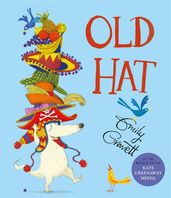
This is a funny, charming story from Emily Gravett all about the joy of finding your own style. Harbet likes his comfy knitted hat, but whenever he wears it the others keep jeering ‘OLD HAT! OLD HAT!’ He tries to keep up with the latest in hat fashions, but as soon as he gets new headwear it’s already an old hat. Harbet feels like he’ll never fit in, but soon discovers that it’s much more fun to stop following others and think for yourself.
Again!
by Emily Gravett
Cedric the dragon is ready for bed, but before he can go to sleep, he needs his mum to reread his favourite story! Sound familiar? Babies and toddlers will love Emily Gravett's bright, bold illustrations of mischievous Cedric – a little dragon who'll do anything to delay bedtime. At the same time, parents will chuckle at the story's all-too-familiar toddler tale.
Wolf Won’t Bite
by Emily Gravett
Wolf Won’t Bite is a wonderfully playful story with a snappy ending, sure to strike a chord with anyone who has both a pet and a young child. Three cheeky circus pigs make a wolf jump through hoops (literally) and even put their head between his jaws . . . but can you push a wolf too far?
Dogs
by Emily Gravett
This beautifully illustrated book by Emily Gravett is full of canines of every shape, size and colour. Everyone will love to bark along with the Chihuahua and tickle the Dalmatian's tummy, but can you choose one dog to love best of all?
Little Mouse’s Big Book of Fears

Everyone is scared of something, so young children will identify with the little mouse who uses this book to document his fears – from loud noises and the dark, to being sucked down the plughole – and there’s a blank space on every page for little worriers to record their own fears.
Blue Chameleon
by Emily Gravett
This witty introduction to colours and shapes will delight readers of all ages with its story of a chameleon who just wants to make friends. The blue chameleon can turn into anything and appear to fit in anywhere, but it seems that neither the swirly snail, the green grasshopper nor the stripy sock want to be friends. Will the chameleon ever find someone to talk to?
Monkey and Me
by Emily Gravett
A mischievous little girl and her toy monkey swing irresistibly through the pages of this playful Emily Gravett book. Children will love guessing the animals they pretend to be, before shouting out the answers as the pages are turned to reveal the real creatures. Soon everyone will be waddling like a penguin, jumping like a kangaroo and waving their arm like an elephant's trunk!
Wolves
by Emily Gravett
When Rabbit borrows a book about wolves from the library, he can’t put it down. But soon, a sinister figure with sharp claws and a bushy tail starts to creep right off the pages. Emily Gravett’s debut book is brilliantly witty and won her the Macmillan Prize for Illustration and her first CILIP Kate Greenaway Award.
